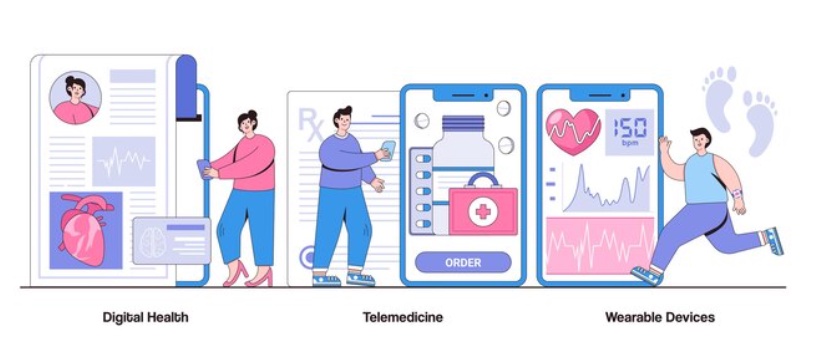Introduction to Connected Care Center
In today's fast-paced world, healthcare has become more interconnected than ever before. One of the key advancements in healthcare technology is the concept of a connected care center. This innovative approach to healthcare delivery has transformed the way patients receive care and has revolutionized the healthcare industry as a whole.
A connected care center is a centralized hub that integrates various healthcare systems, technologies, and providers to provide seamless and coordinated care to patients. It acts as a virtual bridge, connecting patients, healthcare providers, and other stakeholders in the healthcare ecosystem. This interconnectedness brings numerous benefits and advantages, ultimately enhancing healthcare outcomes and patient experiences.
Understanding the Concept of Connected Care
Connected care is a holistic approach to healthcare that leverages technology to connect various aspects of the healthcare system. It allows for the seamless exchange of information, coordination of care, and collaboration among healthcare professionals. By connecting different healthcare systems such as electronic health records (EHRs), telemedicine platforms, and medical devices, a connected care center enables real-time communication and streamlined workflows.
The primary goal of connected care is to improve patient outcomes by ensuring that healthcare providers have access to complete and up-to-date patient information. This allows for more accurate diagnoses, better treatment plans, and improved patient safety. Connected care also empowers patients to take an active role in their own healthcare by providing them with easy access to their medical records, telemedicine services, and personalized health information.
Benefits of Connected Care Center
The benefits of a connected care center are wide-ranging and impactful. Firstly, it enables healthcare providers to have a comprehensive view of each patient's medical history, regardless of the healthcare setting or location. This seamless exchange of information eliminates the need for duplicate tests and procedures, reduces medical errors, and improves the overall efficiency of healthcare delivery.
Secondly, connected care centers facilitate better care coordination among healthcare providers. With all relevant patient information accessible in one place, healthcare teams can collaborate more effectively, leading to improved care transitions and reduced hospital readmissions. This coordinated approach ensures that patients receive the right care at the right time, regardless of their geographical location.
Furthermore, connected care centers enhance patient engagement and empowerment. Patients can securely access their medical records, communicate with their healthcare providers, and participate in telemedicine visits from the comfort of their own homes. This convenience not only improves patient satisfaction but also promotes adherence to treatment plans and better health outcomes.
How Connected Care Improves Healthcare Outcomes
Connected care has the potential to significantly improve healthcare outcomes across various dimensions. Firstly, it enhances preventive care and early intervention. With access to real-time patient data, healthcare providers can proactively identify individuals at risk for certain conditions and initiate appropriate interventions before the condition worsens. This preventive approach not only improves patient health but also reduces healthcare costs associated with managing advanced-stage diseases.
Connected care also improves chronic disease management. Patients with chronic conditions often require ongoing monitoring, medication management, and lifestyle interventions. A connected care center allows for remote monitoring of vital signs, medication adherence tracking, and personalized coaching for patients with chronic diseases. This continuous support and monitoring help patients manage their conditions more effectively and prevent complications.
Furthermore, connected care facilitates better population health management. By aggregating and analyzing data from various sources, healthcare providers can identify trends, patterns, and risk factors within a population. This population-level analysis enables targeted interventions, public health campaigns, and informed policy decisions, ultimately leading to improved health outcomes for entire communities.
Exploring the Connected Care Provider Portal
The connected care provider portal is a key component of a connected care center. It serves as a centralized platform where healthcare providers can access patient information, communicate with other providers, and collaborate on care plans. The provider portal integrates with various healthcare systems, such as EHRs and telemedicine platforms, to ensure seamless information exchange and streamlined workflows.
The provider portal offers a range of features and functionalities to enhance care delivery. Healthcare providers can review patient medical records, order diagnostic tests, prescribe medications, and document care encounters—all within a single interface. This consolidated view of patient information saves time, reduces administrative burden, and enables more informed decision-making.
Moreover, the provider portal supports secure communication and collaboration among healthcare teams. Providers can exchange secure messages, share test results, and consult with specialists, facilitating timely and coordinated care. This real-time collaboration eliminates the need for phone calls, faxes, or physical referrals, improving communication efficiency and reducing the risk of miscommunication.
Implementing a Connected Care Program
Implementing a connected care program requires careful planning, stakeholder engagement, and technological infrastructure. Firstly, healthcare organizations need to assess their current technology capabilities and identify any gaps or limitations. This assessment helps determine the necessary upgrades or investments needed to support a connected care center.
Next, organizations should establish clear goals and objectives for their connected care program. These goals could include improving care coordination, enhancing patient engagement, or reducing healthcare costs. Setting measurable targets ensures that the program's success can be evaluated and improvements can be made over time.
Once the goals are defined, healthcare organizations should engage key stakeholders, including healthcare providers, administrators, and IT professionals, in the planning and implementation process. This collaborative approach ensures that all perspectives are considered, potential challenges are identified, and buy-in is obtained from all involved parties.
Real-life Examples of Successful Connected Care Centers
Several real-life examples demonstrate the success of connected care centers in improving healthcare outcomes and patient experiences. One such example is the Lackey Free Clinic, located in Virginia, USA. The clinic implemented a connected care program that integrated their EHR system with telemedicine platforms, enabling remote consultations and follow-ups for patients in underserved areas. This program not only improved access to care but also reduced emergency room visits and hospital admissions.
Another example is the Cleveland Clinic, a renowned healthcare organization in the United States. The Cleveland Clinic implemented a connected care center that leverages advanced analytics and remote monitoring technologies. This center provides personalized care plans for patients with chronic conditions, allowing them to receive timely interventions and avoid unnecessary hospitalizations. The connected care center at the Cleveland Clinic has resulted in improved patient outcomes, reduced healthcare costs, and enhanced patient satisfaction.
Challenges and Considerations in Implementing a Connected Care Center
While connected care centers offer numerous benefits, there are also challenges and considerations that healthcare organizations need to address. One of the key challenges is ensuring the security and privacy of patient information. Connected care centers deal with large volumes of sensitive data, and organizations must implement robust security measures to protect patient privacy and comply with data protection regulations.
Another consideration is the interoperability of different healthcare systems. Connected care centers rely on the seamless exchange of information between various systems, such as EHRs, telemedicine platforms, and medical devices. However, interoperability issues can arise due to different data formats, standards, or proprietary systems. Healthcare organizations must invest in interoperability solutions to ensure smooth communication and data exchange.
Furthermore, the implementation of a connected care program requires significant financial investment and technological infrastructure. Healthcare organizations need to carefully assess the costs and benefits of implementing a connected care center and develop a sustainable business model to support its ongoing operations.
Future Trends in Connected Healthcare
The future of connected healthcare is promising, with several trends poised to shape the industry. One such trend is the integration of artificial intelligence (AI) and machine learning (ML) into connected care centers. AI and ML algorithms can analyze large volumes of patient data, identify patterns, and provide predictive insights for personalized care plans. This integration has the potential to further enhance diagnostic accuracy, treatment outcomes, and patient experiences.
Another trend is the expansion of remote patient monitoring and wearable technologies. Connected care centers can leverage wearable devices, such as smartwatches or fitness trackers, to collect real-time patient data and monitor health parameters remotely. This continuous monitoring allows for early detection of health issues and enables timely interventions, ultimately improving patient outcomes.
Moreover, the use of virtual reality (VR) and augmented reality (AR) technologies in connected care centers is gaining traction. VR and AR can be used for patient education, surgical training, and even virtual consultations. These immersive technologies enhance patient engagement, improve healthcare professional training, and enable remote healthcare services in a more immersive and realistic manner.
Conclusion
Connected care centers have unlocked the potential for seamless healthcare delivery, revolutionizing the way patients receive care and healthcare providers collaborate. By connecting different aspects of the healthcare system, connected care centers improve patient outcomes, enhance care coordination, and empower patients to take an active role in their healthcare.
While implementing a connected care center comes with challenges, the benefits far outweigh the obstacles. Real-life examples have demonstrated the success of connected care centers in improving access to care, reducing healthcare costs, and enhancing patient satisfaction. As technology continues to advance, the future of connected healthcare holds even greater opportunities for improving healthcare outcomes and transforming the way we deliver and receive care.


No comments yet